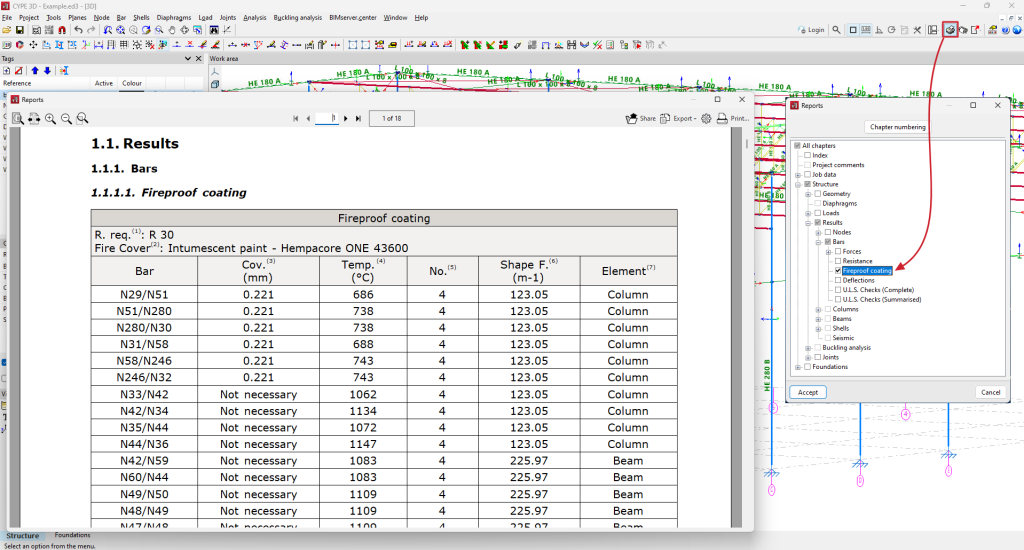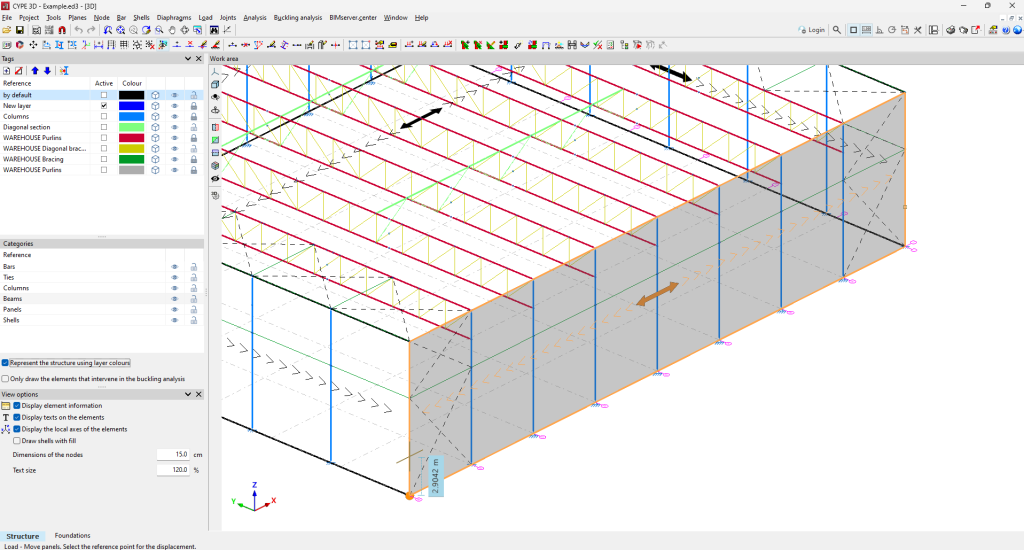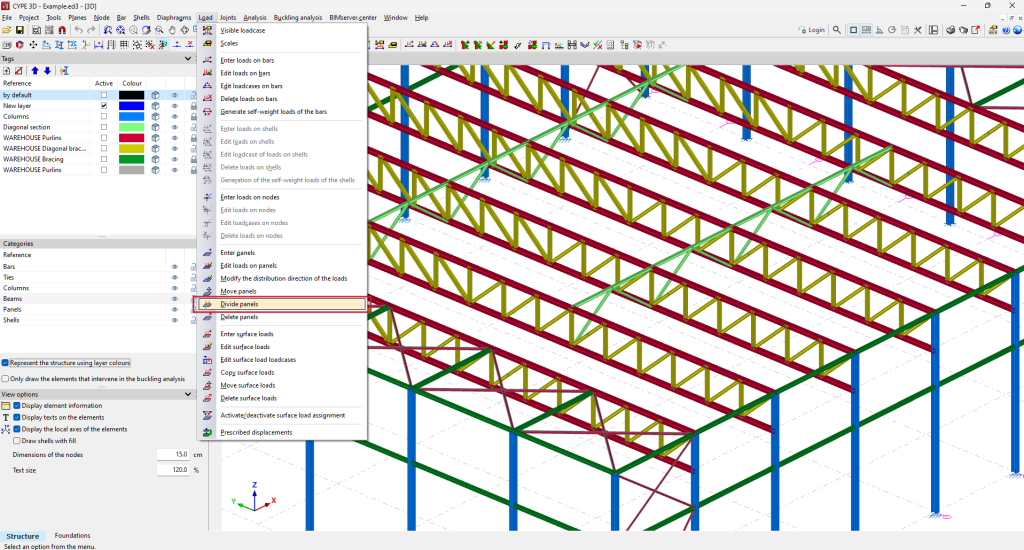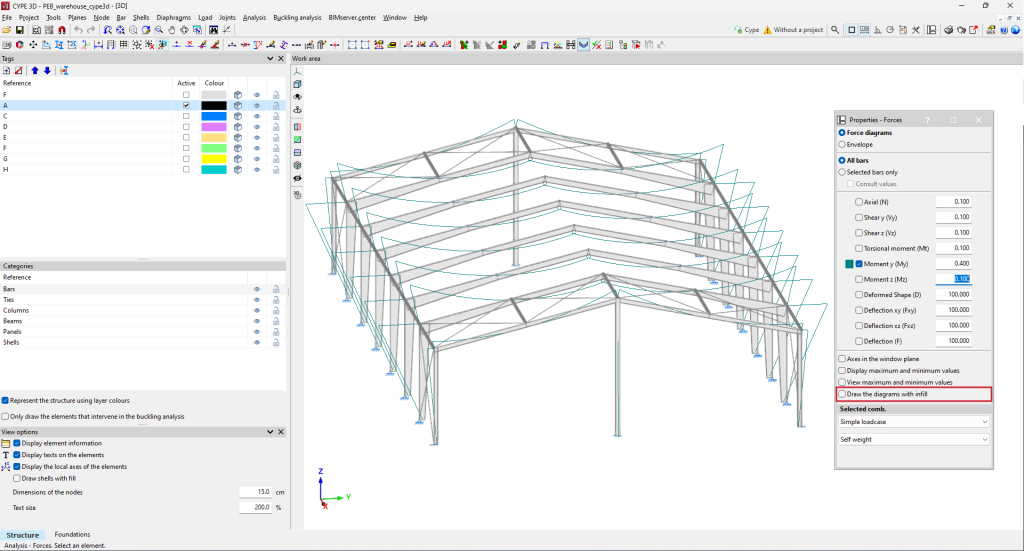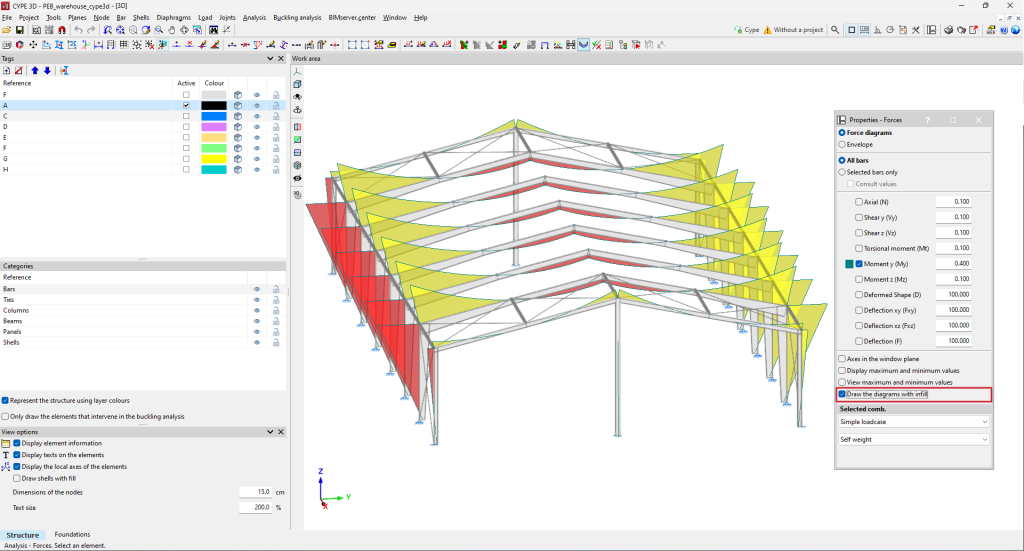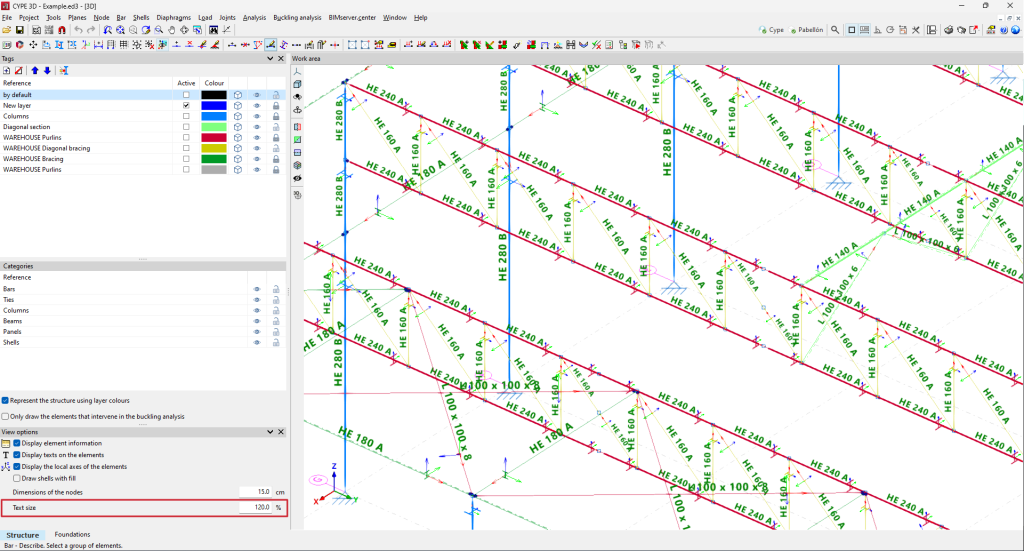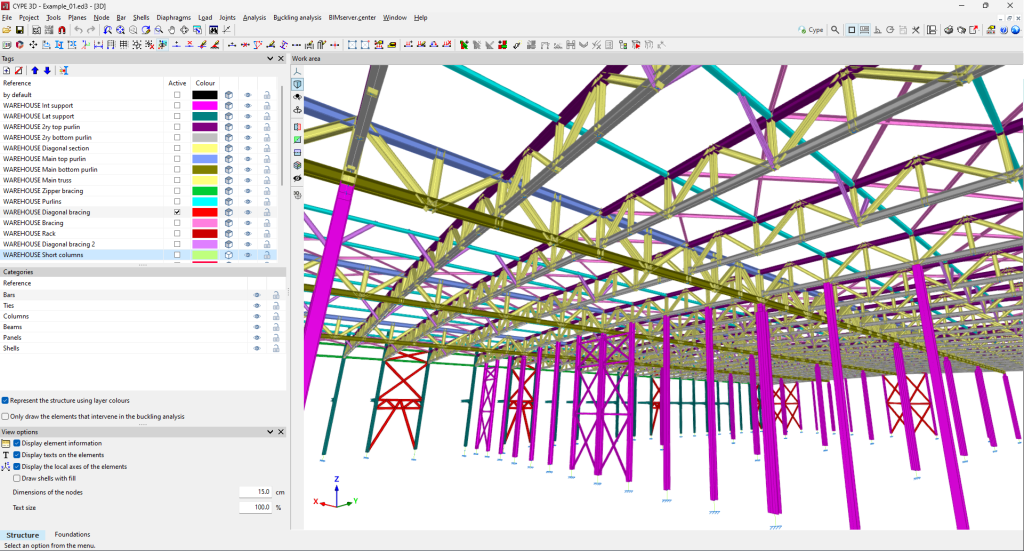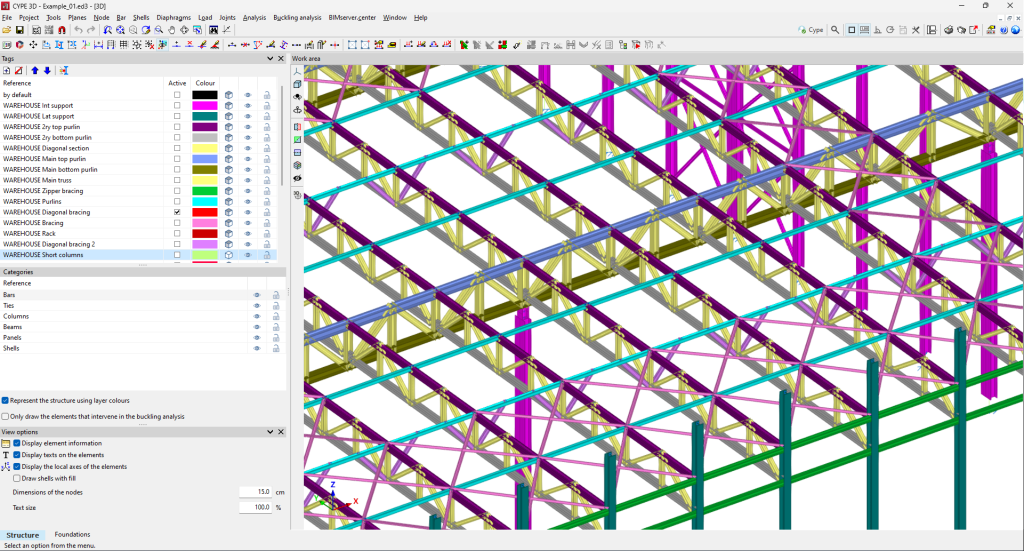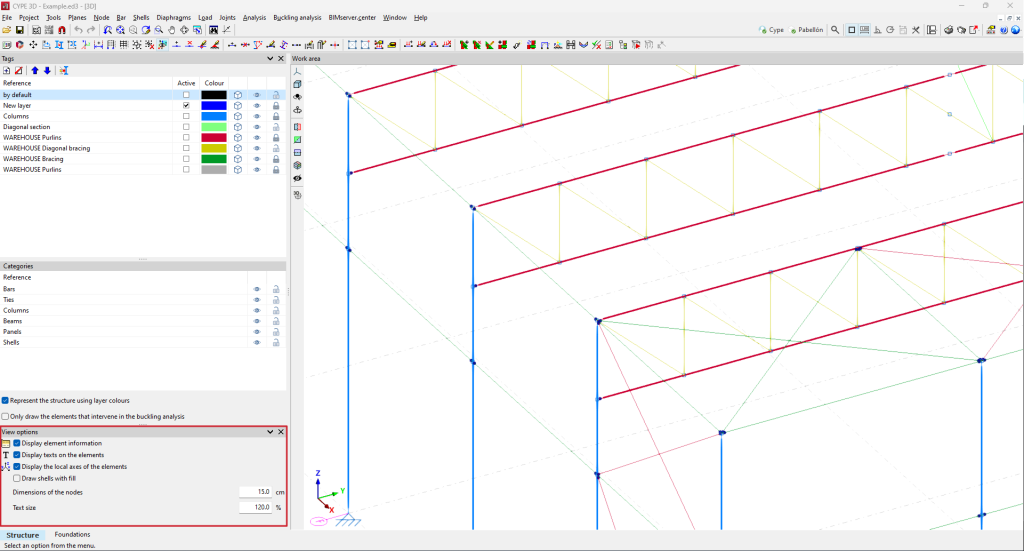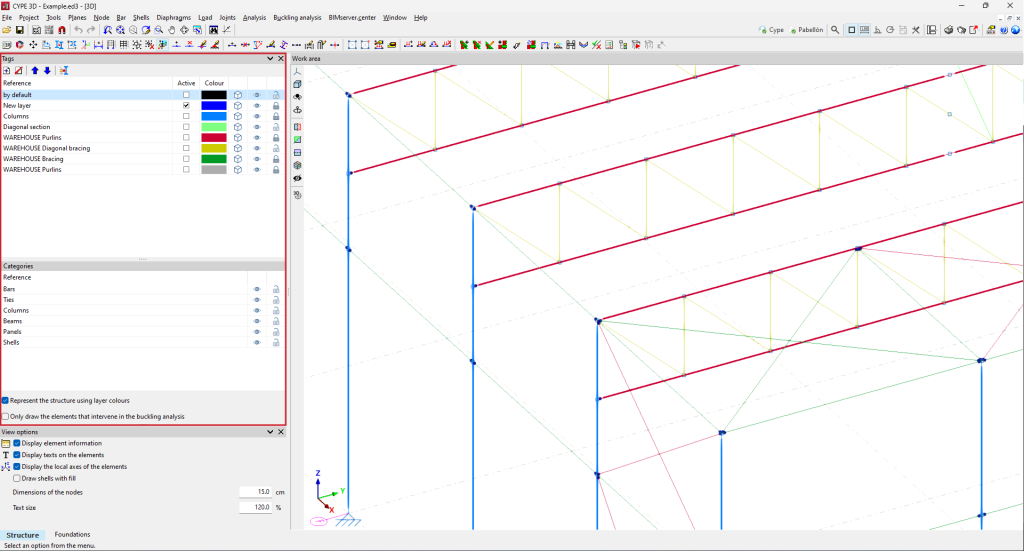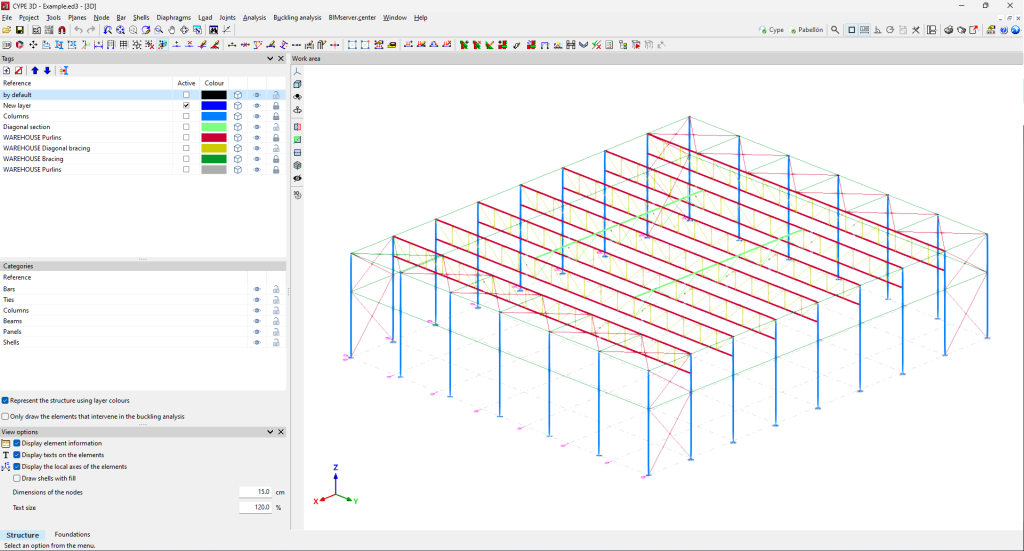Update history
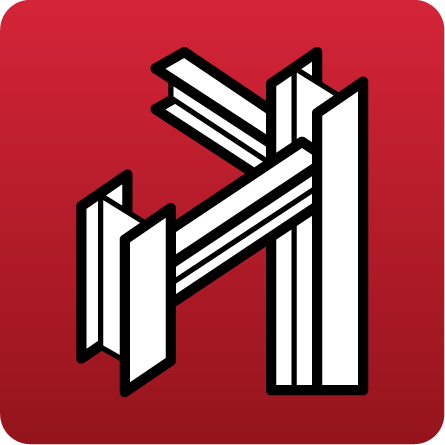
CYPE 3D
Fireproof coating report
- Published on
- 2025.b
Automatically deleting the surface charges associated with panels
In previous versions, when deleting a panel in CYPE 3D, the associated surface loads remained in the model, forcing users to delete the surface loads as well.
As of version 2025.b, deleting a panel will automatically delete all associated surface charges.
- Published on
- 2025.b
Automatically moving surface loads associated with panels
In previous versions, when panels were moved, rotated or copied, the associated surface loads remained in the original position, forcing users to carry out these actions on the surface loads as well.
As of CYPE 3D version 2025.b, the surface loads will be automatically adjusted to the panel's new position.
- Published on
- 2025.b
Adjusting surface loads when modifying panel geometry
Until version 2025.b of CYPE 3D, when moving the vertices of a panel with the "Loads > Move panels" tool, the surface loads associated with the panel remained in their original position, forcing the user to move the surface loads as well.
As of version 2025.b, the surface loads will be automatically adjusted to the new position or geometry of the panel.
- Published on
- 2025.b
Tool for dividing panels
In CYPE 3D version 2025.b, the "Divide panels" tool has been implemented. This tool allows a panel to be divided in two by a straight line.
As well as dividing the panel, all surface loads associated with the panel are also divided. To split a panel, select the two points on the panel outline that define the splitting segment.
- Published on
- 2025.b
Using hardware acceleration for model drawing
As of version 2025.b, CYPE 3D will use hardware acceleration for drawing the model. This implementation provides a smoother movement of the model, among other advantages.
- Published on
- 2025.b
Drawing filled force diagrams
- Published on
- 2025.b
Option for editing the size of texts displayed on the screen
- Published on
- 2025.b
3D representation of elements
Up until now, bars were drawn schematically as one-dimensional elements and shells as two-dimensional elements.
As of version 2025.b, users can choose how elements are drawn, schematically or in 3D. This selection can be made independently for each tag (in the new "Tags" dockable window from version 2025.b).
When the 3D representation is selected, the bar texts are not represented to improve the display.
- Published on
- 2025.b
Drawing preferences
As of version 2025.b, the "Drawing preferences" window, which was located in the "Job" menu, has become a dockable window with the name "Display options".
These options, which are very common when using the program, have been placed within the program's main dialogue box to provide users with direct access to them.
- Published on
- 2025.b
Tags. New name and functioning of the display layers
In previous versions, the program had display layers. With the "Layer management" tool, users could create layers and define their configuration, and each element could have one or more layers assigned to it.
As of version 2025.b, this tool is now called "Tags" and will be one of the dockable windows that users can keep on screen (more information on the new CYPE 3D version 2025.b dockable window environment). This window is divided into several sections: the list of tags, the list of categories and other drawing options.
While defining and analysing the model, users often need to show or hide certain elements and enable or disable elements that can be snapped (for deleting, editing, etc.). This implementation gives users direct access to this tool. One of its main advantages is being able to activate/deactivate the display and/or snapping of elements according to tags or categories with a click of the mouse.
- Published on
- 2025.b
Dockable window environment
As of version 2025.b, CYPE 3D features a new dockable window system that replaces the main screen user interface. As a result, users can now customise the workspace to suit their needs.
Dockable windows can be moved and resized. They can be either floating windows, pinned to a location within the application's main dialogue box, dragged outside of it, or even moved to another monitor.
More information on Dockable windows can be found in the link to the new feature from version 2023.e.
- Published on
- 2025.b


